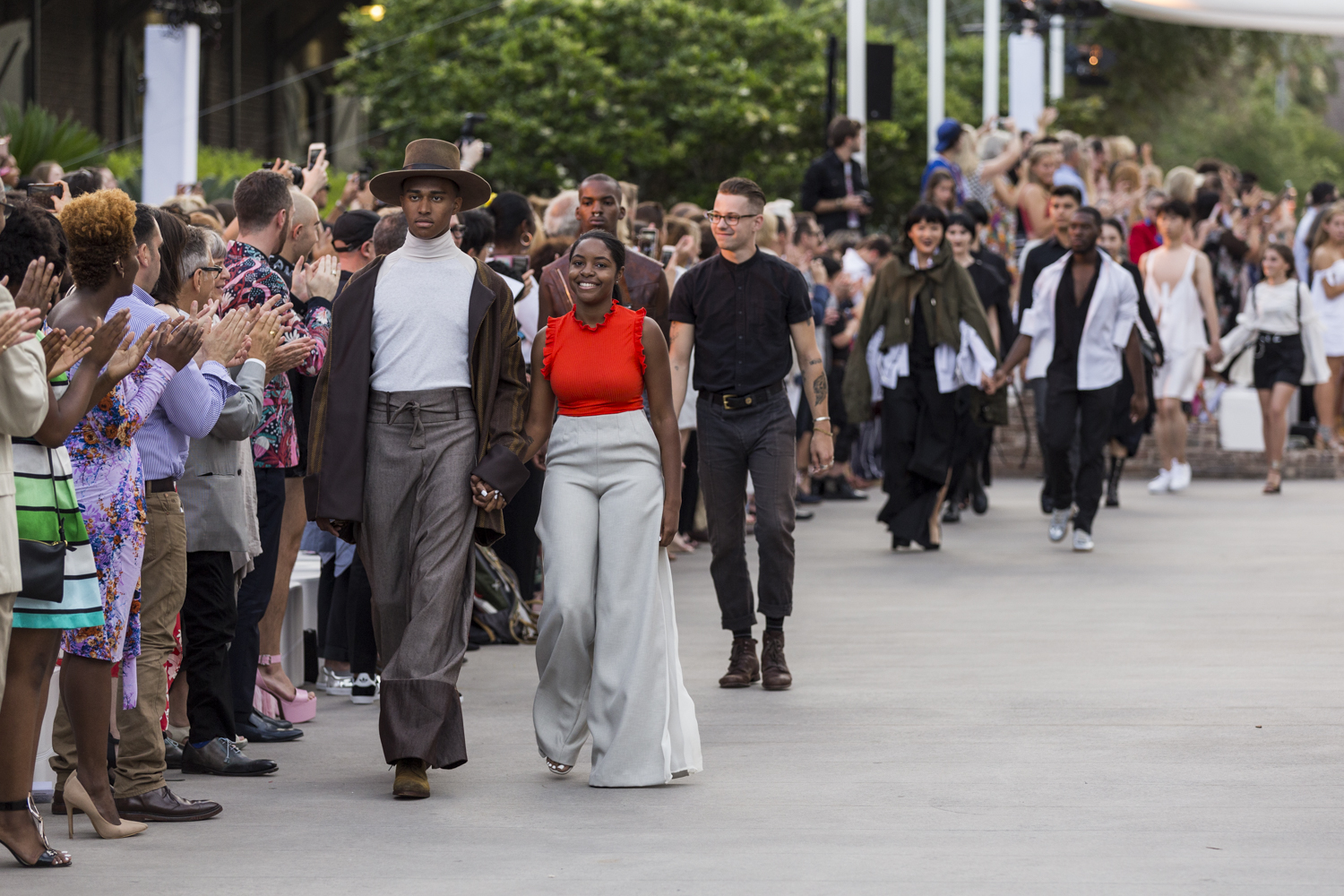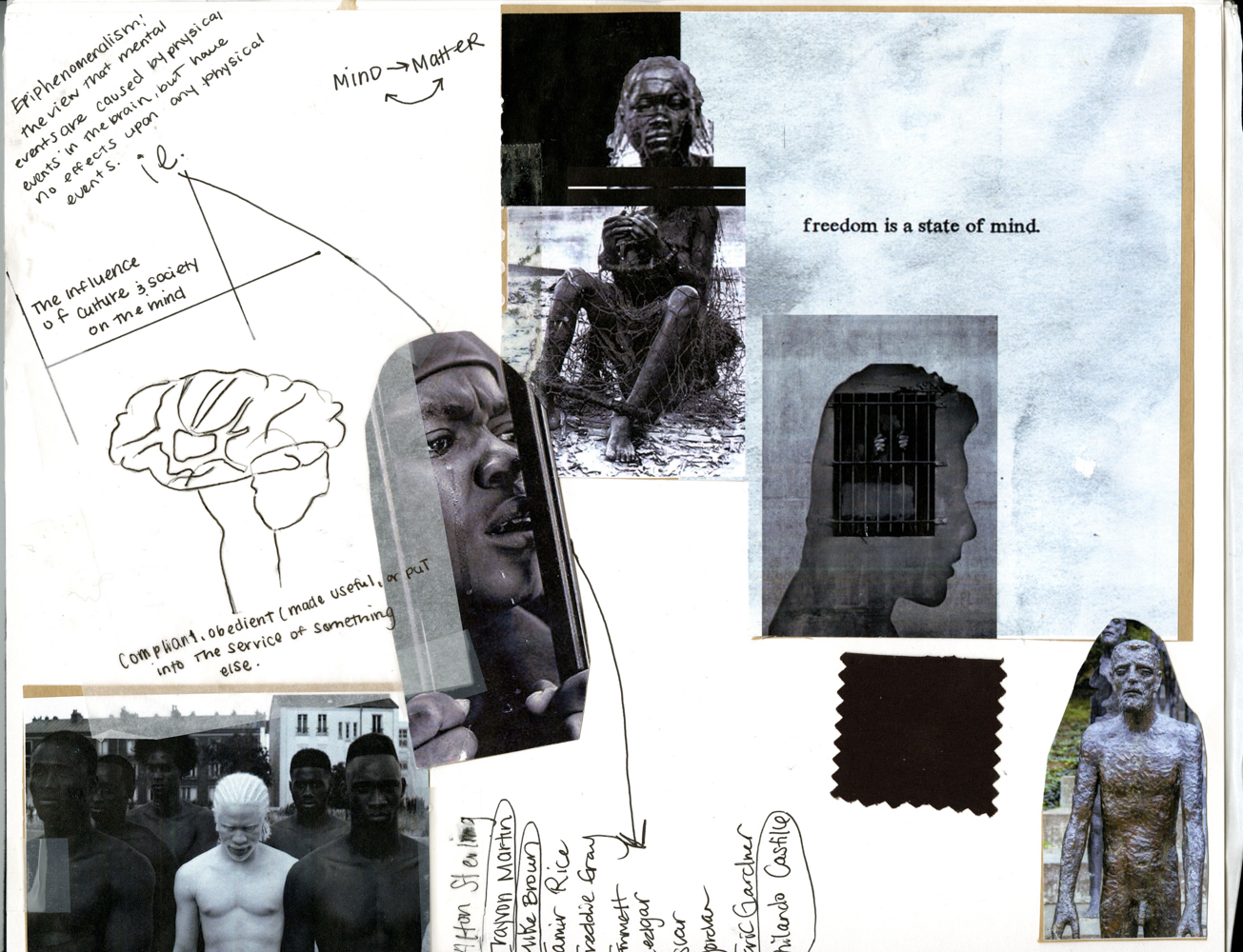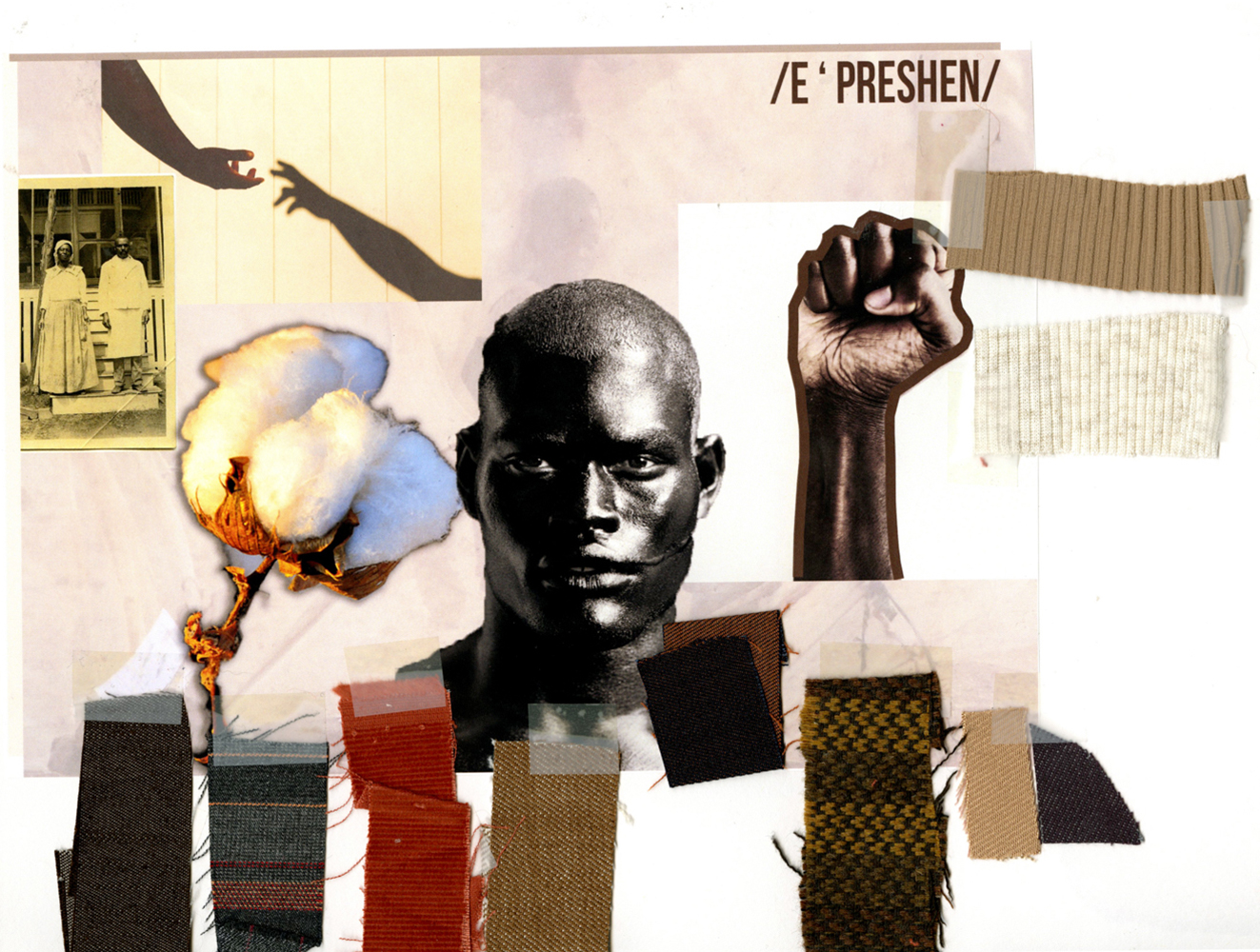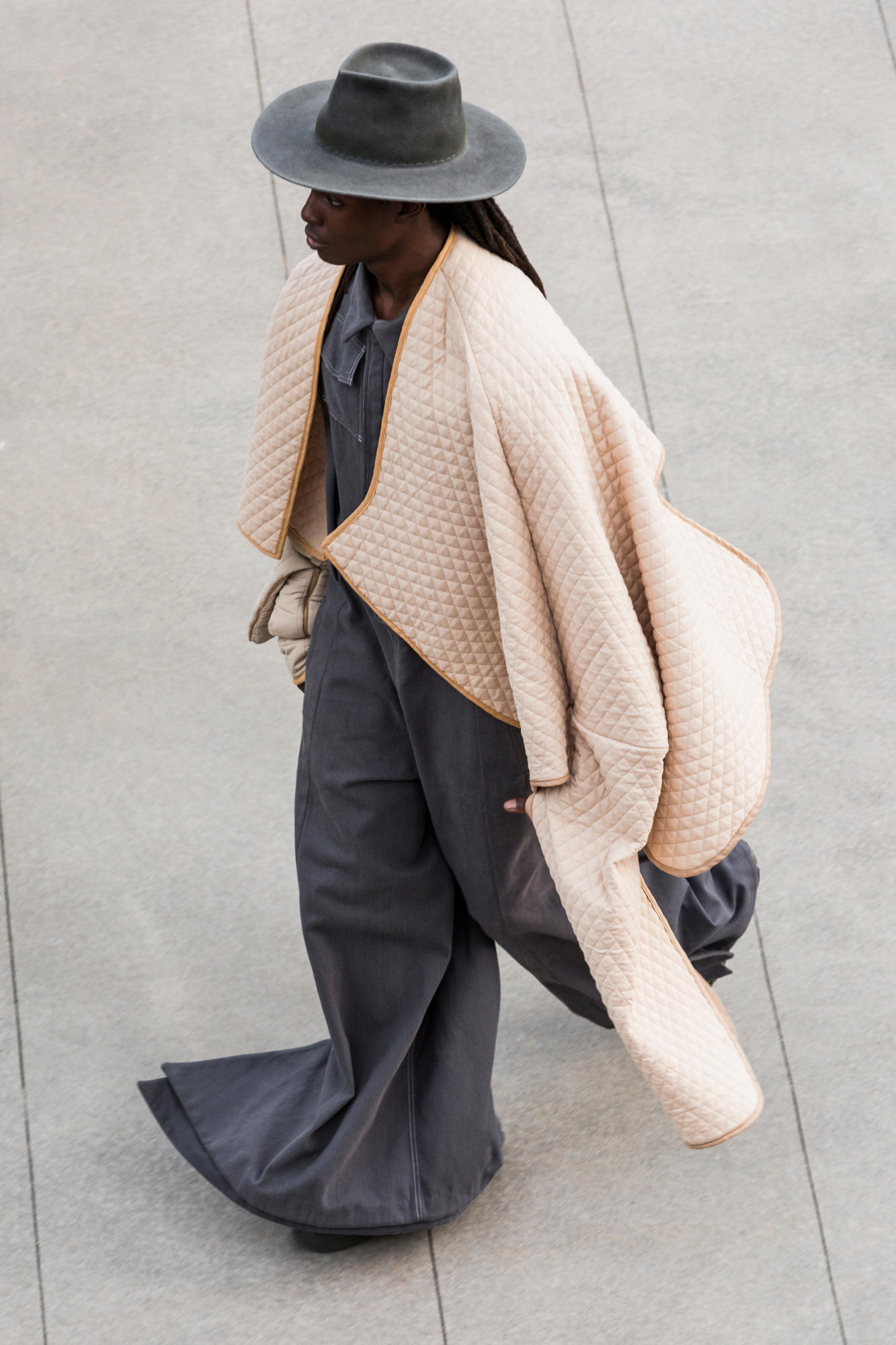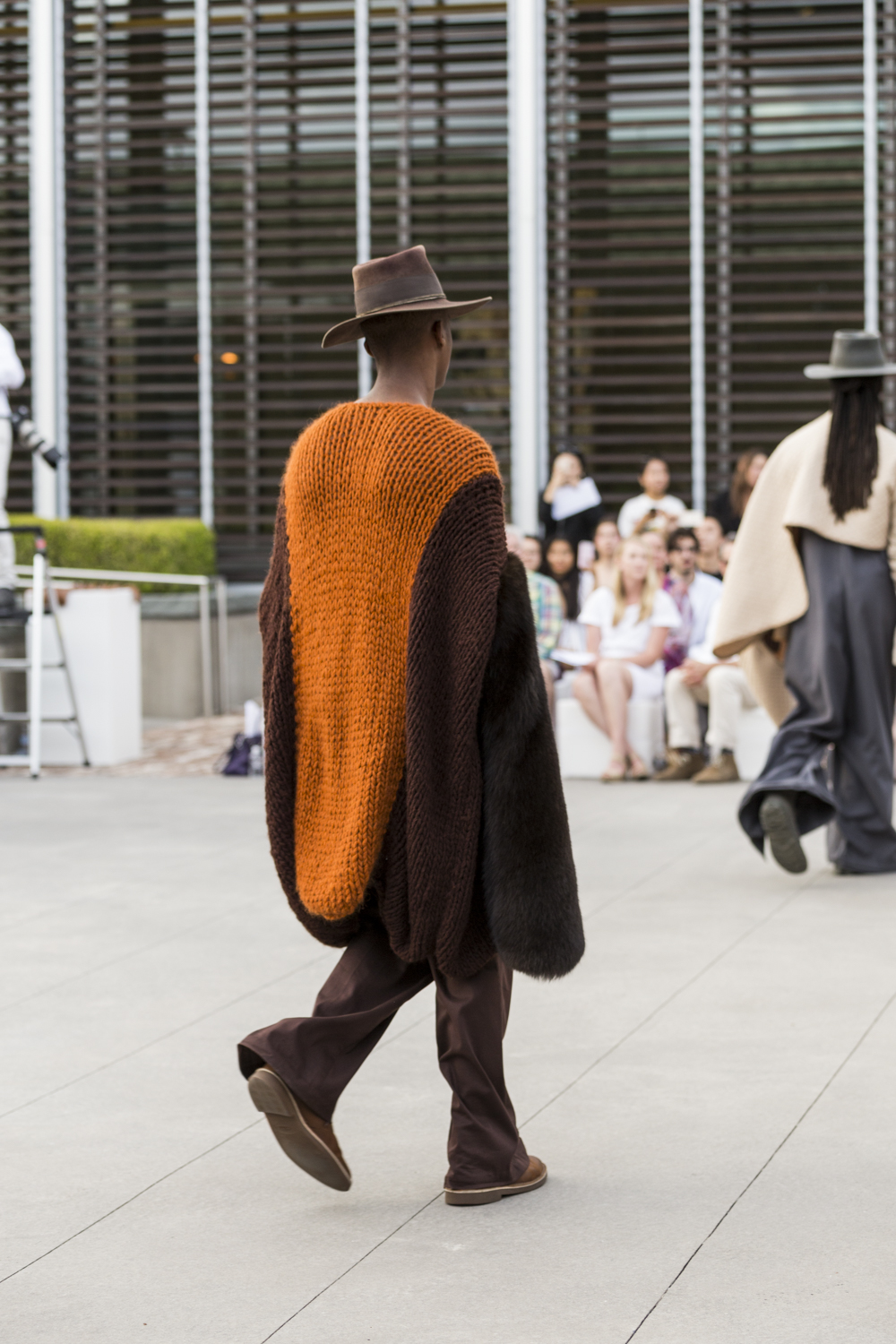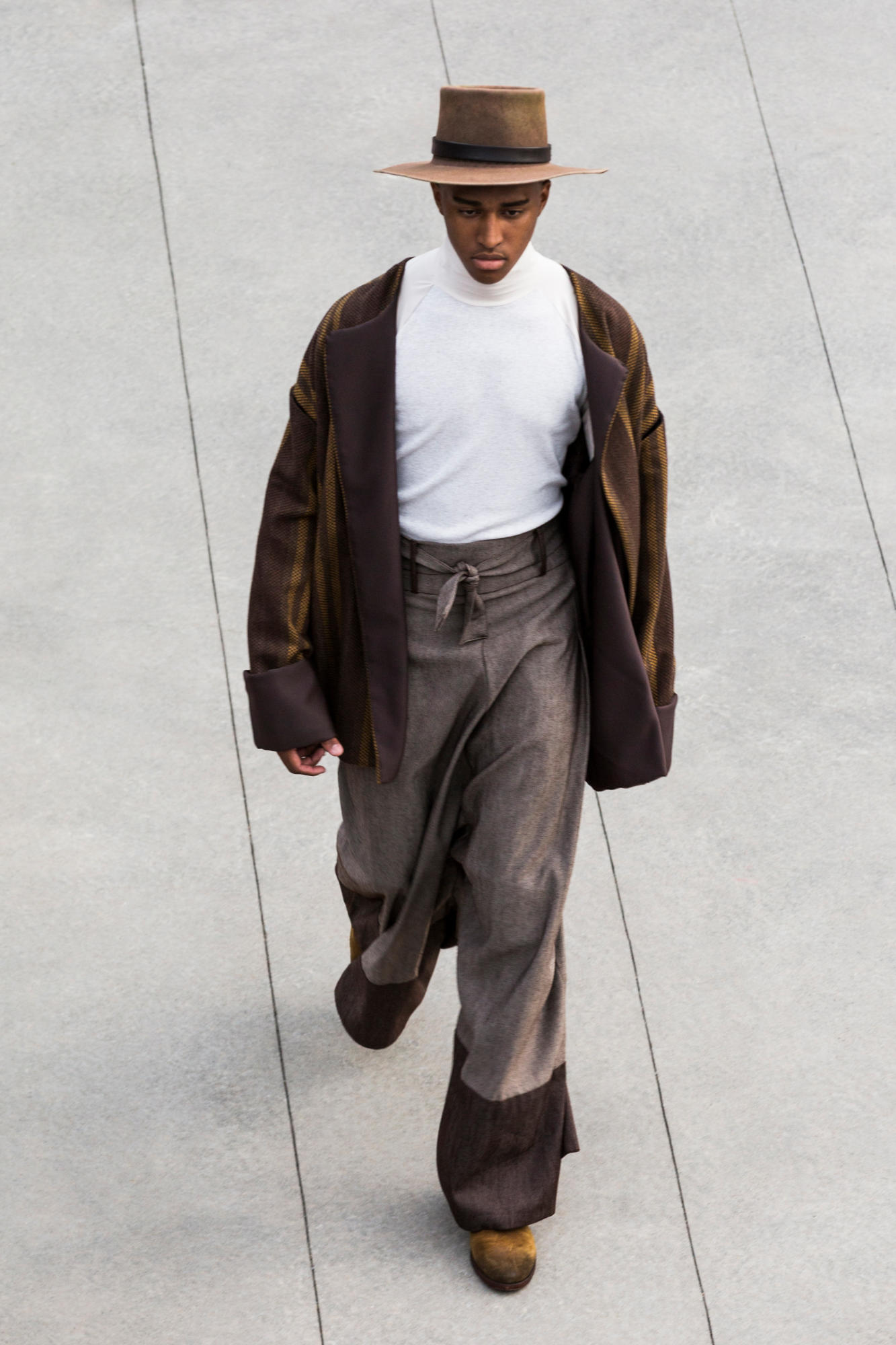At SCAD’s inaugural SCAD FASHWKND, history was made in the School of Fashion by design senior Rikki Raiford. For the first time since the fashion show was created, a collection in the runway show featured four looks instead of the three typically shown by selected graduates. Raiford’s collection, entitled E’PRESHEN (how the pronunciation of oppression is spelled), left a lasting impression.
The 22-year-old St. Louis, Missouri, native was initially exposed to fashion in high school by her maternal grandmother, who gifted her with the knowledge of hand sewing and taught her how to operate a sewing machine.
I think it was when I took my first home economics class back in my hometown,” Raiford stated when asked how she became interested in fashion. “Funny thing… We had to make a bathing suit and mine was horrible. It’s amazing to see how far I’ve come since then.”
Throughout Raiford’s college career in Atlanta, she has been putting in work towards solidifying her position as a menswear designer. In January 2017, Raiford won a national fashion scholarship from the Young Menswear Association Fashion Scholarship Fund.
“For the past three years,” said Raiford, “I have interned in New York City to gain real-world experience while building my resume to prepare me for a career in Fashion.”
While interning at DKNY in the summer of 2016, Raiford began her research for E’PRESHEN. It started as a study on how events, such as slavery, can shape a person’s “thoughts, actions, and overall the way they live life.” But it has continuously evolved throughout her senior year.
I started with writing down words that initially came to mind at the time. This was right around the uproar of the Philando Castile shooting and I was enraged and angry, so I began [with] how I was feeling,” said Raiford.
E’PRESHEN was personal. Raiford felt isolated as she advanced through school and was curious to understand that emotion. So she reflected upon her African-American heritage and looked into the past and present of the community. Slavery and institutional oppression of African-Americans — sensitive topics for many — are two of many subjects that Raiford wanted to initiate a dialogue about.
Despite her hesitation and fear of exploring a delicate matter, the potential backlash, and the lack of understanding some may have regarding the work, Raiford went through with her concept. And she credits her boyfriend and parents for helping her decide to remain dedicated to her concept, as they fully supported her decision to express what felt honest in spite of potential disapproval from some.
I felt in my heart that I had the opportunity to really shed a light on how 365 years of slavery has affected the world we live in today,” Raiford said of her collection.
Professor Julia Kroener at SCAD Atlanta reviewed Raiford’s idea after her internship and encouraged for further research on color and silhouette.
At this time, the senior-syndrome was probably kicking in: insomnia, traits of obsession, a few (OK, maybe more than a few) tears, and other feelings that come with producing a personal project. That didn’t stop Raiford from digging deeper into the history of the African-American community, until she discovered images of slaves and developed striking silhouettes referencing those images.
I went through four color stories,” said Raiford, “and by this time I became frustrated because I felt as though I wasn’t progressing my ideas. I cried about three times, from silhouettes being off and zippers breaking right before a look was due for a grade.”
As show-day drew closer, Raiford’s vision began to come alive: a color palette filled with rich browns — an allusion to people of African descent — striking and refreshingly modern silhouettes, and exaggerated sleeves to list a few details. Each look encompassed superb craftsmanship.
Leading up to FASHWKND, the chatter at Savannah’s Eckburg Hall was focused on a SCAD Atlanta senior whose collection the jurors were obsessing over, and that this collection was going to open the show. Raiford says she discovered she had been selected to open the show while working on a fashion film. A friend messaged on Instagram stating he had seen the line-up.
I instantly froze and I had about 10 seconds of shock before it fully processed,” said Raiford. “For the next 30 minutes I kept saying to my friend: “omg this is crazy, I can’t believe I’m opening the show!”
Show-day: The music panned in and four African-American male models donned four looks from E’PRESHEN. The significance of Raiford’s collection, beyond being the first to show four looks total, is the fact that it presented a black woman’s perspective on black social issues at a university who’s diversity make-up, according to SCAD’s Fact Book (2016), is 52.1 percent white to 9.97 percent black. And still, Raiford was able to narrate a compelling story on African-American culture that all could appreciate.
The pièce de résistance — and a crowd favorite — was her drop-shoulder knitwear piece elevated by luxurious fur sleeves. Raiford claims that she had the urge to incorporate this knit into E’PRESHEN about four months before show-day. She says it was a gamble, as she “had no idea about knitting besides what [she’s] seen at [her] internships.” A designer’s instinct, for Raiford at least, is never wrong.
After the show, conversation stayed focused on Raiford’s collection. Guests could be heard saying: “who made the oversized knit sweater?” and “my favorite looks had the wide-brim hats in the beginning.” E’PRESHEN etched a mark in everyone’s memory.
Power,” Raiford states when asked about the message she wanted to make clear. “The power of the people, and how just because we came from oppression — and how we’re still a part of [it] till this day — doesn’t undermine or take away from the greatness that makes us who we are.”
Raiford was able to cleverly capture the current zeitgeist by entwining cultural narratives, history, and contemporary social issues to convey a powerful message through fashion. But what’s next for her?
First, graduating with her B.F.A. in fashion design from SCAD this spring quarter. Next, an immediate move to New York City to be at the epicenter of American fashion and working with a big-named label. Amidst working, Raiford will be developing her next collection and contributing to the positive wave of change in opportunity for minorities in the fashion industry.
Raiford’s knack for highlighting current events through her designs and unapologetic dedication to being a voice of a generation, especially for minorities in fashion, is going to take her far. We can’t wait to see the evolution of Rikki J., the brand, and Rikki Raiford, the young woman destined to shake up the fashion world.
Written by Anthony O’Baner
Process images courtesy of Rikki Raiford
Runway photography by Angie Stong and SCAD
Lookbook photography by Christian Cody, courtesy of Rikki Raiford

